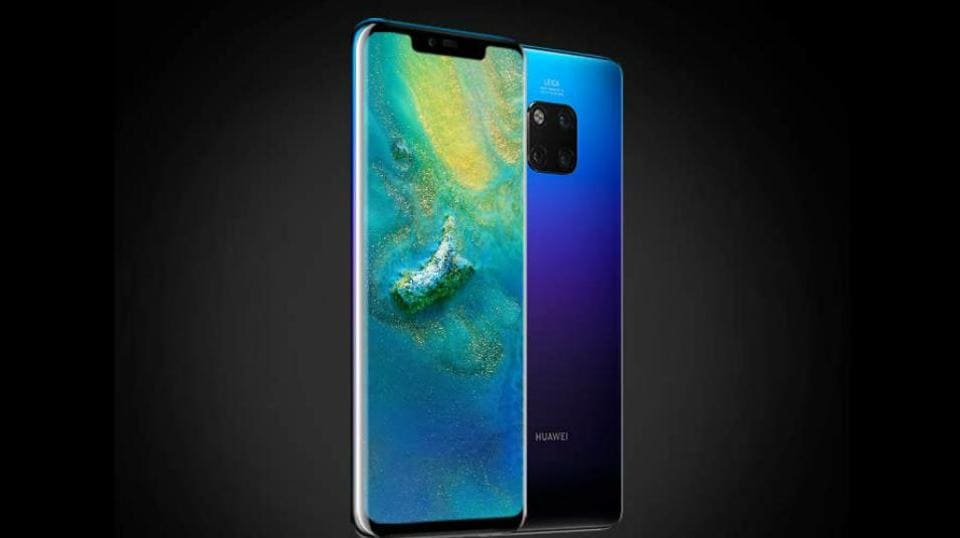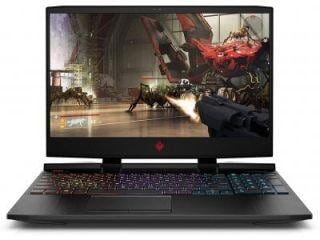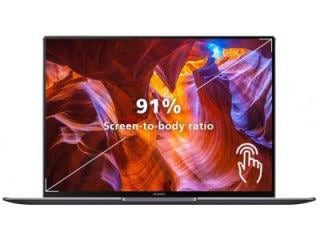Huawei Mate 20 Pro review: Here’s what living with this phone for a month feels like
Huawei Mate 20 Pro is a glass body Swiss army. But would you ever use every single bit of what the Mate 20 Pro has to offer? Find out in our detailed review.

Brand: Huawei
Product name: Huawei Mate 20 Pro
Key specs: Kirin 980 SoC, 4,200mAh battery, 6.39-inch Full HD+ display, 40MP triple camera setup with Leica lens, reverse wireless charging
Price: ₹69,990
Rating: 4.5/5
The launch event of the Huawei Mate 20 Pro last year was straightforward—it was a jab at Apple's newest iPhones and accessories. If Apple has the A12 Bionic chipset, Huawei has the Kirin 980. If the iPhone XS has 4GB of RAM, the Mate 20 Pro has 8GB of it. If the iPhone has two cameras at the back with advanced AR capabilities, the Mate 20 Pro has three of them capable of doing portrait videos in real time. If the iPhone has a 4G LTE antenna capable of download speeds of 1024Mbps, the Mate 20 Pro has one capable of 1400Mbps.
In short, the Huawei Mate 20 Pro is a glass body Swiss army. But here's the thing—would you ever use every single bit of what the Mate 20 Pro has to offer? To answer that, I used the Mate 20 Pro for more than a month, and here's what I have found out:
Design
The body of Huawei Mate 20 Pro is crafted mainly out of two materials—glass and metal—but with a twist. The front and back of the Mate 20 Pro are reminiscent of the Samsung Galaxy S9, thanks to the use of 3D curved glass. But its stunning dual tone colour gradient sets it apart from any flagship out there. We received the Twilight colour variant of the smartphone, which doesn't come with that "acoustic" textured back. The glass on both sides is surprisingly resilient to scratches, although I didn't take the chance to drop the ₹69,990 smartphone.
It is a fingerprint and, surprisingly, lint magnet. The glass surrounding the square camera module is slightly raised, so it is always filled with lint from your pockets.
The volume rocker and lock button are placed on the right side of the phone and are made out of anodised metal. Button presses are crisp and satisfying but aren't unnecessarily loud. The lock button also has a red accent.
No matter how much I like the quality of buttons, they can also be a bit of a nuisance. There's no right way to pick up this smartphone if it's lying on a surface with its screen on—you either end up pressing the lock button or tapping something on the display.
And since the smartphone's exteriors are made out of heat conducting materials, it takes immense willpower to pick it up on a chilly winter morning—it's essentially ice.
The loudspeaker of the Mate 20 Pro resides inside the centrally placed USB Type-C port. It is a neat trick to hide the unpleasant loudspeaker grille and its benefits are restricted cosmetically. The audio coming from the loudspeaker is noticeably reduced when the device is charging. I say reduced and not muffled since it seems like a software issue.
The SIM tray is the standing testimony of Huawei's attention to detail. Huawei could have easily slapped the tray somewhere on the top or the sides of the smartphone. Instead, they chose to fit it in a location that doesn't really have the space to accommodate a full-sized SIM tray.
It's a two-sided hybrid SIM tray which can accommodate two SIM cards or a SIM card and a NanoSD card (one of Huawei's creations) at a time. The fact that the SIM card stays put inside the tray even after violently shaking it is immensely satisfying.
Display
The front of the Mate 20 Pro is lit up by a 6.39-inch QHD+ AMOLED display with a resolution of 3,120 x 1,440. This means the smartphone has a 19.5:9 aspect ratio and 538ppi pixel density. The panel is HDR 10 compliant and has a wide-gamut range. It has the maximum manual brightness of 508 nits which can go up to 660 nits if the ambient sensors in the notch detect it's too bright outside.
The display brightness is seldom an issue—it can tackle really bright and really dim scenarios really well without any kind of manual intervention.
The display is well saturated and crisp, thanks to the HDR 10 capabilities and high pixel density. It is a joy to watch Netflix and YouTube videos on this device if you're a media junkie.
The top of the display is interrupted by a massive notch, which imposes its own problems. It's sleek, so it's not an eyesore (I'm looking at you, Google Pixel 3XL). But it's extremely wide, as it has to accommodate all the 3D facial recognition tech and cameras. So you end up with almost no space to see notifications on the display. The notification tray is occupied by the signal bars, sound profile, Bluetooth and GPS icons, so I could never see the notification icon of any app. Yes, there is a notification LED and lock screen to display that, but it becomes irritating when you're using the phone.
Hardware and performance
The Mate 20 Pro runs Huawei's in-house Kirin 980 chipset, which has the honour of being world's first 7nm-based chipset, beating Apple by a few days. Since it's based on a smaller process, the chipset is both, more efficient and faster than its predecessor, Kirin 970.
Huawei claims the chipset provides 20% more computing performance than its predecessor. Since better performance is now mapped in terms of AI capabilities, it comes with a dedicated neural processing unit (NPU) which Huawei claims to provide more than 120% increase in AI performance.
The benchmarks scores easily eclipse the current generation of Android flagships running on the Snapdragon 845 processor, especially in multi-core computing.
The processor is paired with up to 8GB of RAM and 256GB of internal storage which is further expandable up to 256GB via Huawei's proprietary NanoSD card, which is essentially a NanoSIM card-sized memory card. I think the new memory card has more drawbacks than advantages, like the lack of availability and the inability to go all the way up to 512GB.
The raw power of the processor allows the Mate 20 Pro to run the latest titles like PUBG Mobile, Asphalt 9 and Garena Free Fire effortlessly. Opening and switching between apps also do not take time.
The smartphone comes with three biometric options—the good old PIN/alphanumeric password, facial recognition and the new in-display fingerprint scanner.
While facial recognition is lightning fast, the in-display fingerprint scanner is hit-or-miss. The sensing area is small, so you're never sure where to place your finger. The sensor is also not very accurate, to begin with, and any kind of dirt on your fingertips might hinder the process of unlocking your smartphone.
But even with the issues, this is one of the more fast and reliable in-display fingerprint scanning implementations in the market right now.
Software
The Mate 20 Pro runs the latest Android version of Pie with EMUI 9.0 running atop. The software experience is sub-par but is held together by the original OS. The icons are either childish or are straight-up borrowed from iOS. You also do not have an app drawer, period. It took me great perseverance to not throw in a launcher and stick to EMUI. I highly doubt if any person paying top buck for a smartphone would want to be spotted with childish icons and no app drawer.
Gesture navigation isn't as polished as other smartphones, especially going back by swiping the edges of the smartphone. I ended up nearly toppling the phone over while reaching for the curved edges of the smartphone, after which I realised I'll be much happier using the good old three-button navigation on this one.
The good thing is the bloatware is manageable and often useful. Pre-installed apps include Themes, Phone Manager, HiCare, Tips and an SOS app called Emergency.
The list of software features is endless, so I'll try to keep it as simple as possible.
There's a feature called "HiVision", which is essentially Huawei's implementation of Google Lens. You hold down the screen with two fingers if you spot anything interesting on your screen and the app will show you relevant items that can be bought off the internet. This is useful if you're a fashion junky and wish to copy your favourite celebrities. It is also integrated into the camera app, so you can point the camera at something you wish to know more about and it will show you results.
There's also a smart screenshot feature lets you take screenshots by knocking twice on the screen. You can also draw a free form screenshot by knocking twice and drawing a closed figure. You'll often find yourself accidentally double tapping on the screen with your fingers and seeing glittery outlines following your finger. It is slightly unnerving until you understand what it is all about.
Digital balance is Huawei's rendition of Google's Digital Wellbeing. It lets you know how much time you spend on individual apps and lets you set a timer to restrict your smartphone usage. I found out I spend an average of 6 hours and 7 minutes on my smartphone, which was enough to freak me out.
Camera
If you're keen on buying the ultimate camera smartphone, this probably might take the cake—by quite a margin.
The back of the smartphone sports a radial arrangement of three cameras (with Leica lenses) with an LED flash occupying the fourth corner. The primary 40MP camera has a regular focal length, while the 20MP has an ultra wide-angle lens with a focal length of 16mm. The 8MP camera has a 3x telephoto lens. This range of focal lengths is what makes the camera so powerful.
The ultra-wide angle lens gives you more field-of-view so you don't have to crouch back to fit everything in your frame. The 8x zoom is actually useful—there's very little noise or loss of resolution in fully zoomed-in photos since it is optical zoom that's working, not digital.


The three image samples outline the range of focal length possible on this device. Colour reproduction is almost always on point, except with the surrounding are reasonably dark. The sensor likes to shift to a greenish tint at that time. Thanks to the resolution of the sensors on all three cameras, image details are never going to be your issue. Images can be zoomed in considerably before they run out of breath.


The night mode is almost at par with the Google Pixel 3XL. I clicked the sample image in a really dark environment with no direct lighting and still the text on the bottle is visible. It even adds a bit of depth in the image, since it's the primary camera with a really wide aperture being used in night mode.


Daylight images are balanced and the auto HDR brings out the details lost in the shadows. This corner was one of the most tricky places to click dark subjects in and the auto HDR does its job of clicking a decent image even under a backlight.
The AI mode is at par with the Pixel and iPhone standards—you'll seldom find yourself fiddling around with exposure or the pro mode.
The front of the phone sports a 24MP sensor with a 26mm wide angle lens sitting on top of it. This offers a great field of view for a front facing camera. The issue is the beautifying algorithm is extremely aggressive. It will always try to make your skin look smoother, even after turning down all the settings to zero. I'm honestly not a big selfie person, but looking myself in the viewfinder with flawless skin was a bit unnerving for me. The software trickery is good enough to keep backlight under control so that the overall exposure of the image doesn't go out of hand.
Coming to video recording—it's a mixed bag.
Apart from the whole shebang of 4K recording at 30fps and 720p slow-motion at 960fps, you also get refreshed OIS and EIS tech and some neat features like video portrait and video spot colour—in real time. If you want to show off the processor of this smartphone to someone, drop that top class PUBG performance, because you can actually view the camera tracking a person in a 4K video—in real time!
The results are pretty neat, just make sure you're outdoors and your subject maintains a distance of at least 50 cm from the background for best results. It even works well with multiple subjects. I'm not sure about the practical application of this mode, but it sure looks good.
#HuaweiMate20Pro's portrait video mode in action. pic.twitter.com/EzfmPEiuze
— Shubham Raheja (@akkaasd) January 18, 2019
But that's where the pros end and cons begin. Since AI scene detection, OIS and EIS are all working together, it tends to slow down the process displaying what you're shooting in real time. So if you're moving your camera from side to side, you'll always notice a bit of delay in camera movements on your viewfinder. You do get used to this after a while, but it's not very precise. You can't shoot 1080p videos at 60fps with OIS, which is a bummer since you can shoot 4k with it. Finally, the crop factor of the video mode completely cancels out the advantage of the wide angle lens at the front. I like recording guitar videos and I had no choice but to keep the camera really far off to have both my fretting and strumming hand in the same frame in the portrait mode.
Overall, your chances of being an Instagram champ would be doubled with this camera if you don't have a guitar vlog.
Battery
The Mate 20 Pro is backed by a 4,200mAh battery and is shipped with a 40W charger which Huawei claims can charge "a percent of battery every 30 seconds". Huawei stands up to the claim, with a twist. To let your battery live longer, Huawei starts trickle charging your battery after 80% when its rapid charging. This might not be that big of a deal, but it does give me a bit of range anxiety at times.
The smartphone goes zero to 80 in about 40 minutes, which is pretty decent. The battery life, however, is not that great. There were only a few days when the phone lasted a bit more than a day.
My regular use consists of about 2 hours of video watching, about an hour of gaming and the rest doing the regular business of sending and receiving emails, browsing the web and checking my Facebook and Instagram feeds.
The quick charging more than makes up for it, but I was expecting a bit more than a day's use.
The Mate 20 Pro is also capable of wirelessly reverse charging other smartphones, but it's neither quick nor practical and its use is restricted solely as a party trick for now. After 30 minutes of wirelessly charging an iPhone XS I achieved about 3% of charge.
Verdict
Should you get this Mate as your roommate?
There's no doubt that this is one of the most affordable proper flagship devices in India, offering stunning looks, excellent performance and the latest version of Android. The trio of cameras shod with Leica lenses also put this at the forefront of photography experience.
If you are willing to live with childish icons or probably slap a launcher to hide the lacklustre UI, this smartphone is for you.
Catch all the Latest Tech News, Mobile News, Laptop News, Gaming news, Wearables News , How To News, also keep up with us on Whatsapp channel,Twitter, Facebook, Google News, and Instagram. For our latest videos, subscribe to our YouTube channel.































